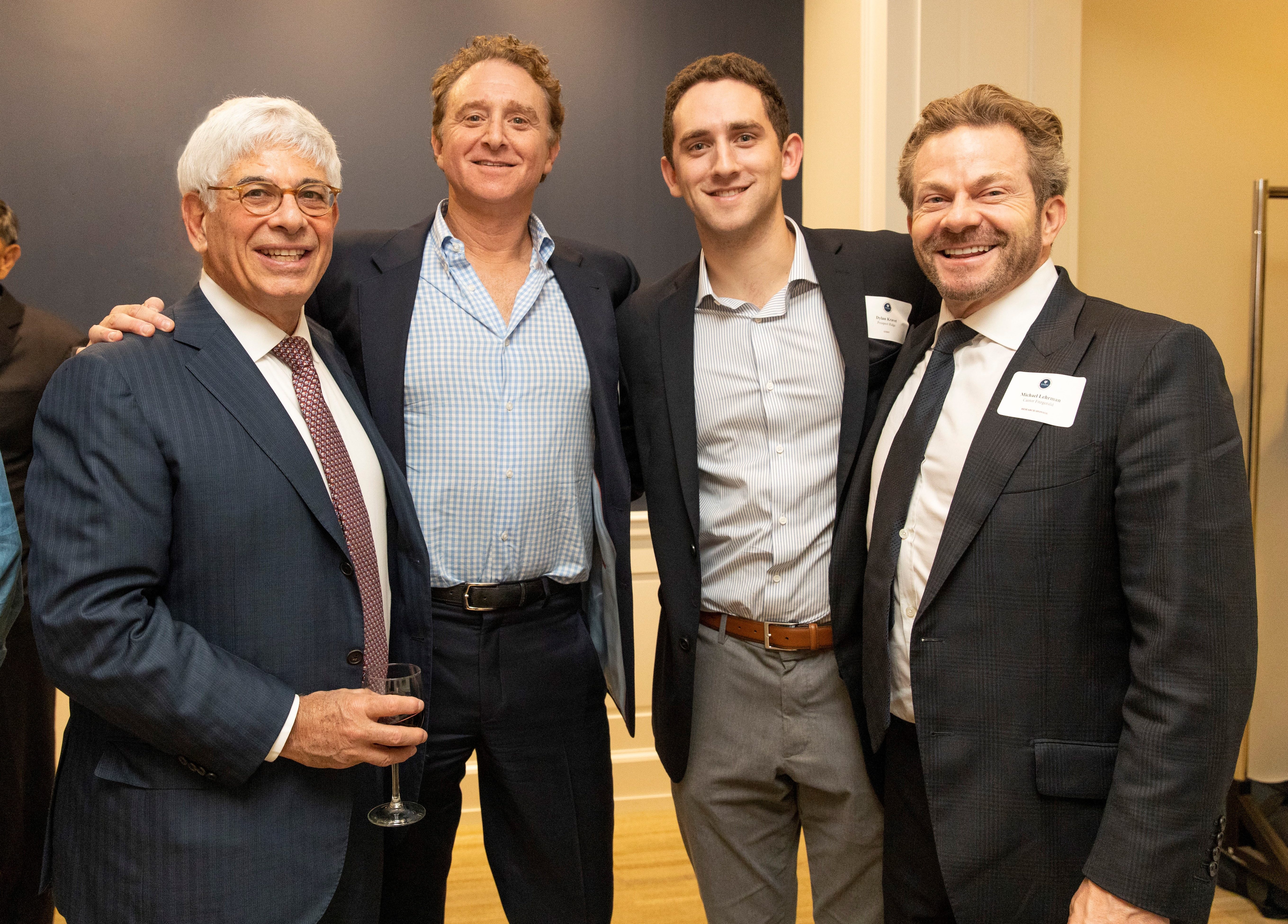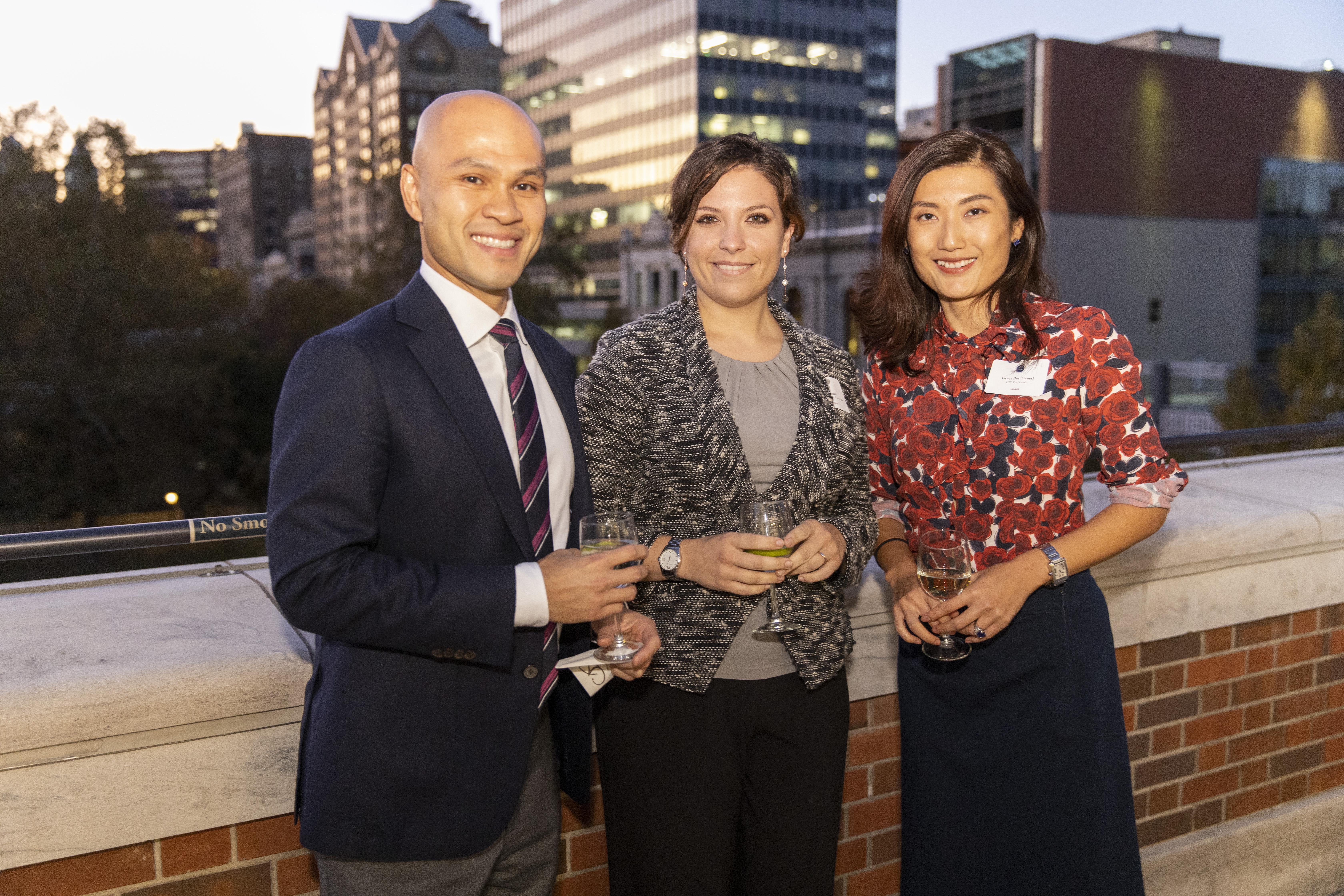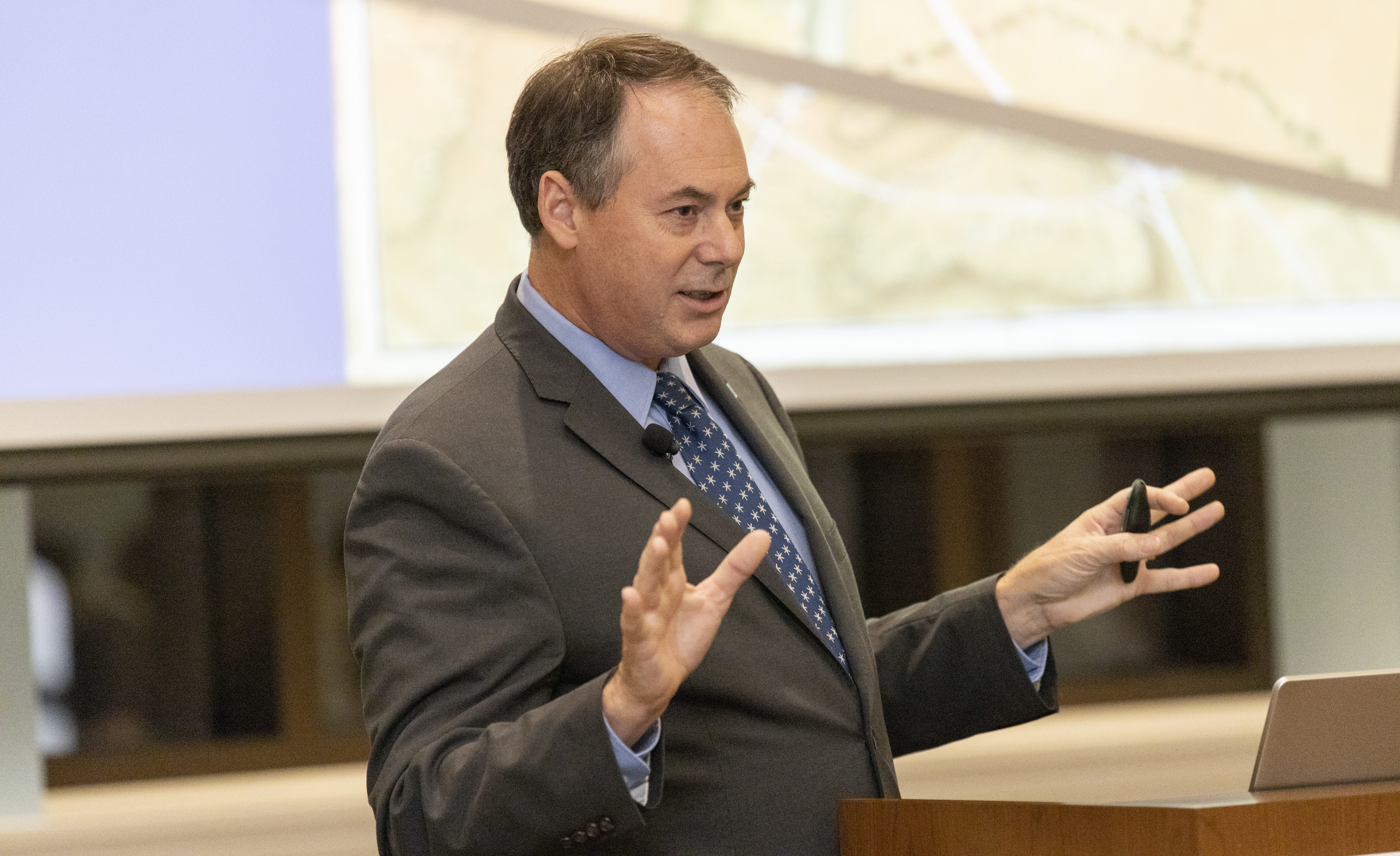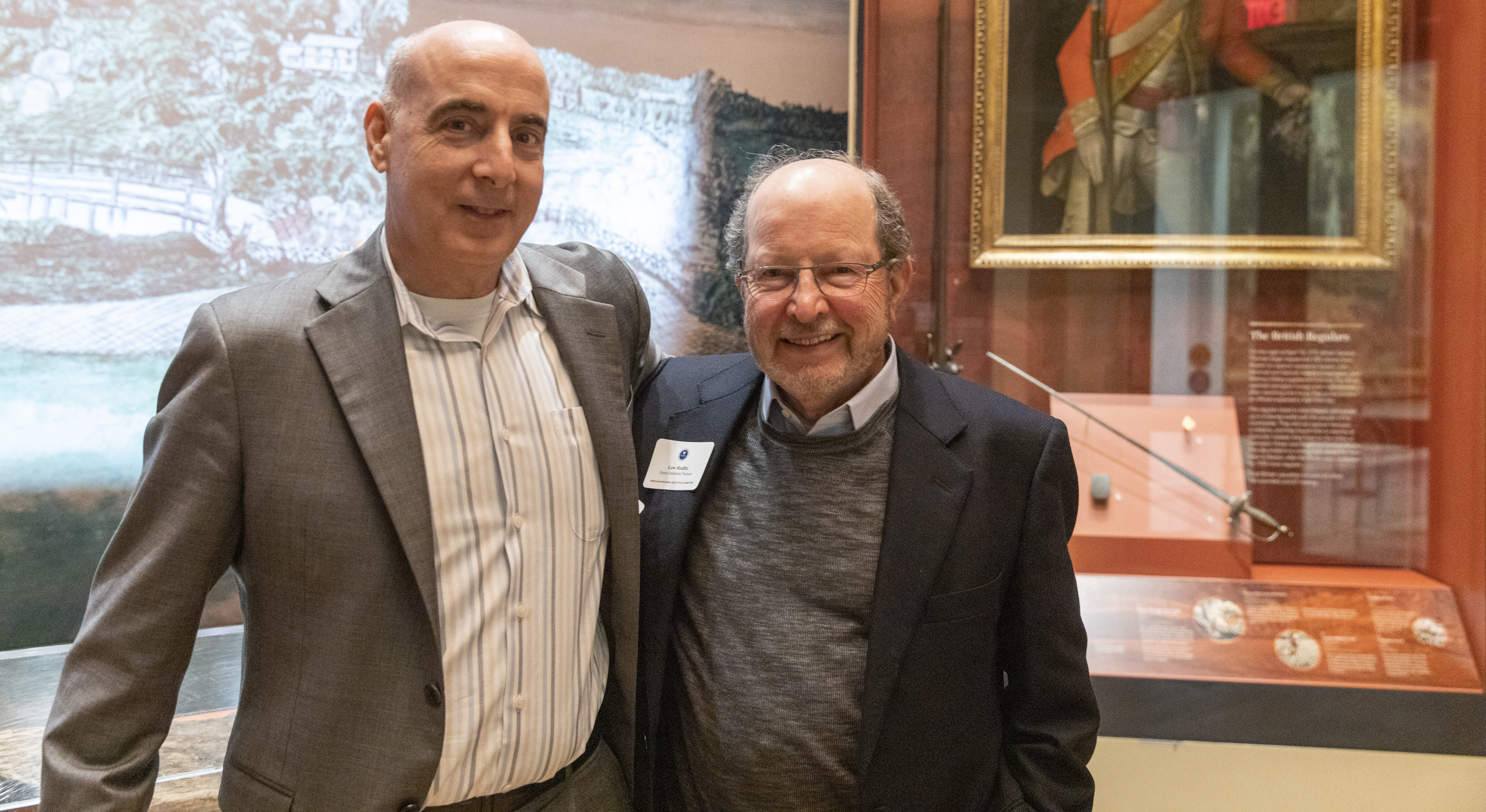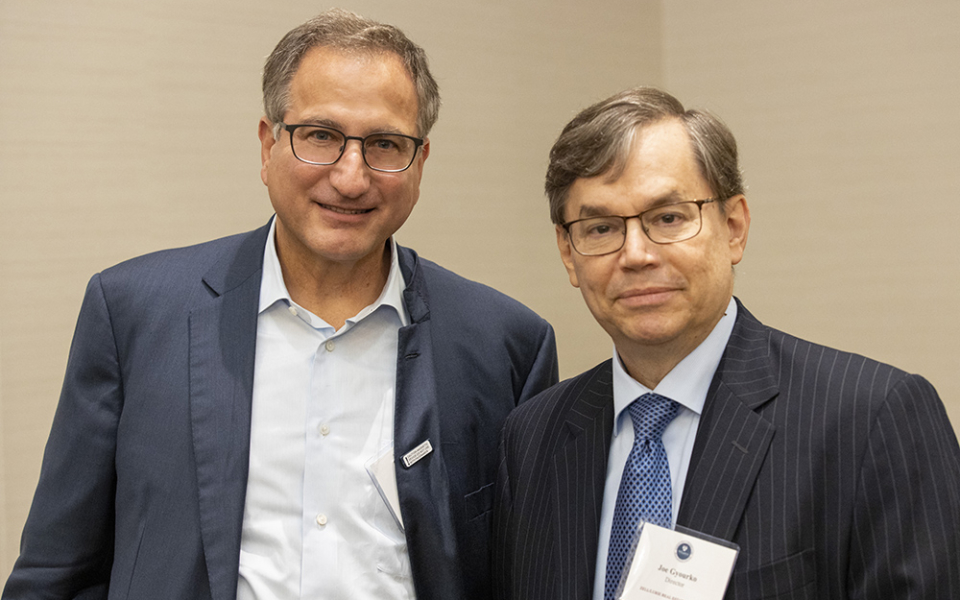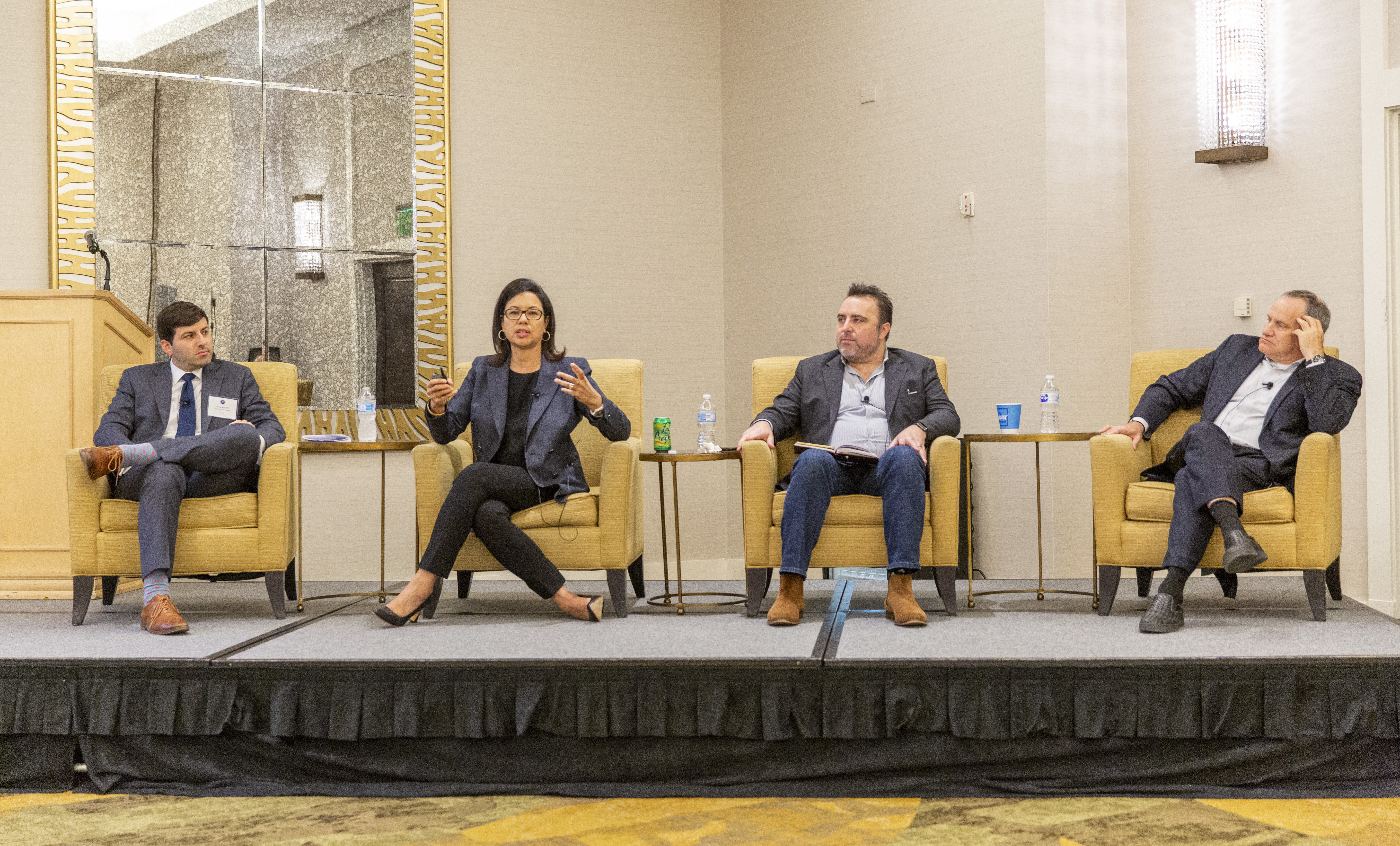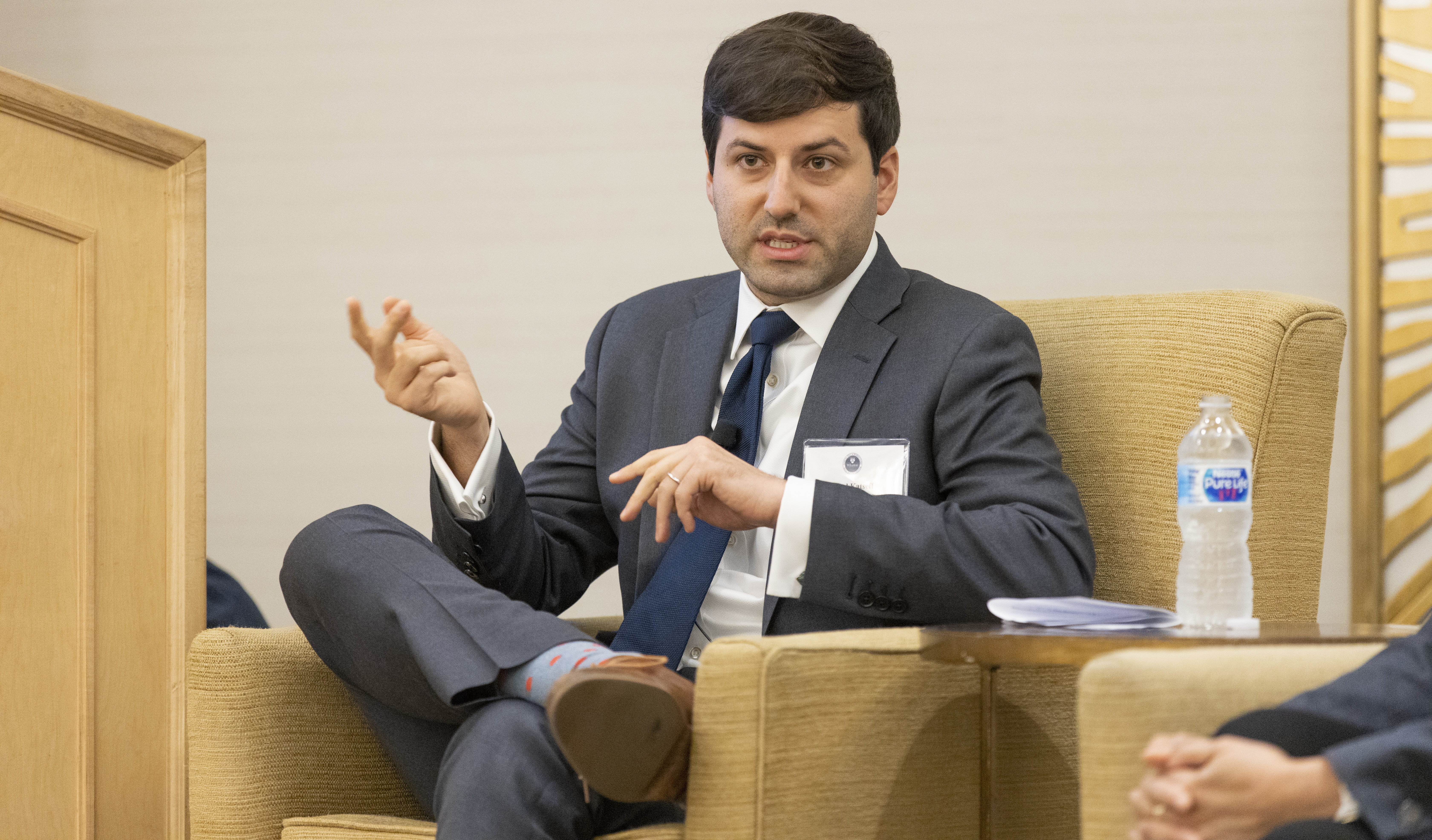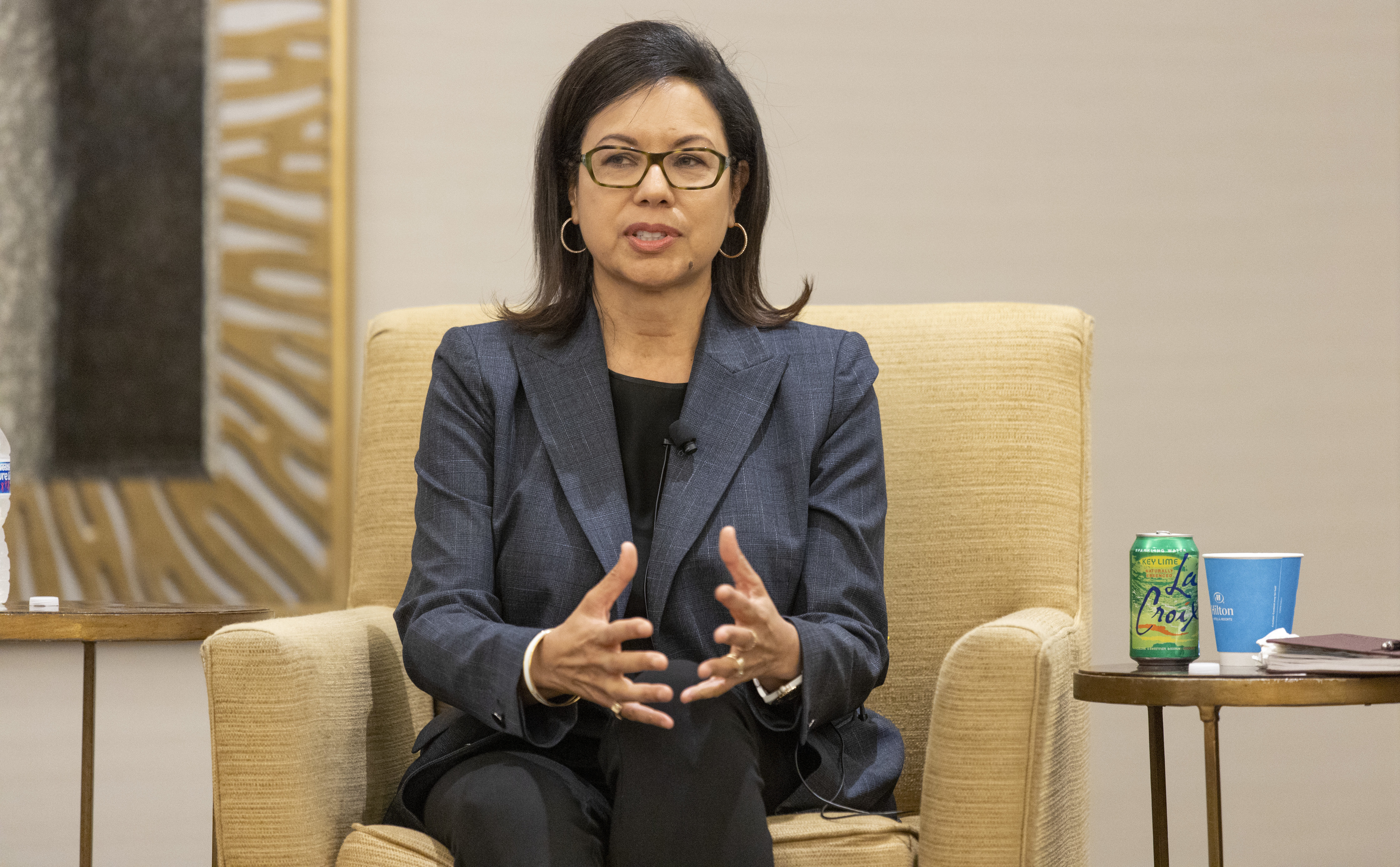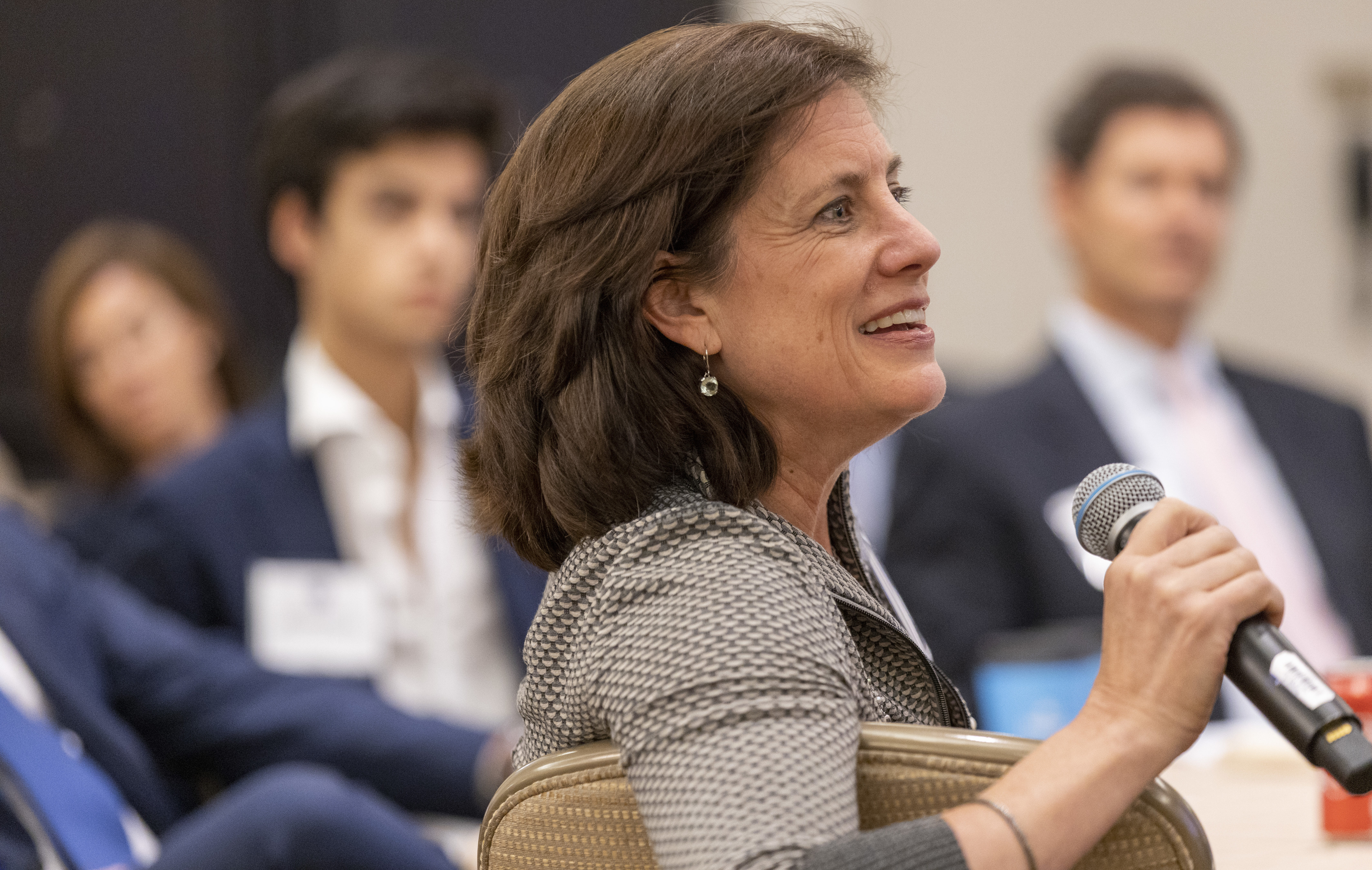2019 Fall Members’ Meeting Summary
Zell/Lurie Real Estate Center 2019 Fall Members’ Meeting
Thursday, October 24, 2019 – Friday, October 25, 2019
The Fall Members’ Meeting began Thursday evening, Oct. 24, with a dinner and talk for Zell/Lurie Research Sponsors, Executive Committee Members and guests at the Museum of the American Revolution. Featured speaker Scott Stephenson, President and CEO of the Museum of the American Revolution, spoke of America’s revolutionary beginnings and the museum’s mission. Afterwards guests explored the exhibitions and enjoyed a private screening of the immersive film “Washington’s War tent.”
Matthew J. Lustig, Chairman of Investment Banking, North America; Head of Real Estate & Lodging, Lazard; and Chair, Advisory Board, Zell/Lurie Real Estate Center at the Wharton School, welcomed participants to the fall members’ meeting on Friday, October 25, by talking briefly about some of the Center’s new ideas and plans for networking and educational conferences going forward.
He then introduced Joe Gyourko, Martin Bucksbaum Professor of Real Estate, Finance and Business Economics & Public Policy; and Nancy A. Nasher and David J. Haemisegger Director, Zell/Lurie Real Estate Center, who introduced the keynote speaker, Vijay Kumar, Nemirovsky Family Dean of Penn’s Engineering School, and Professor of Mechanical Engineering and Applied Mechanics, and one of the world’s preeminent robotics engineers and researchers, to speak about the impact his work will have on the real estate world.
-
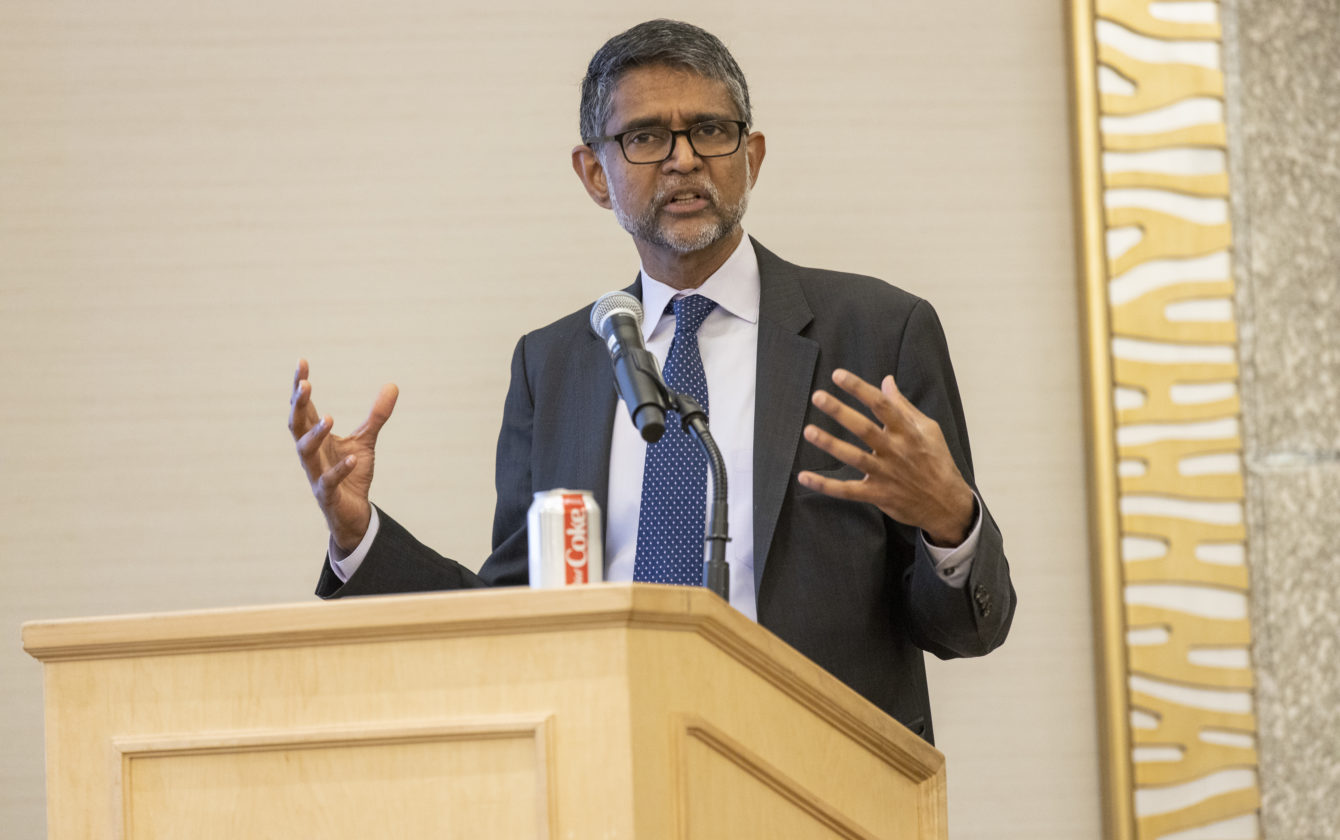
Vijay Kumar, Nemirovsky Family Dean of Penn’s Engineering School, and Professor of Mechanical Engineering and Applied Mechanics, discussed the roots of Artificial Intelligence. -
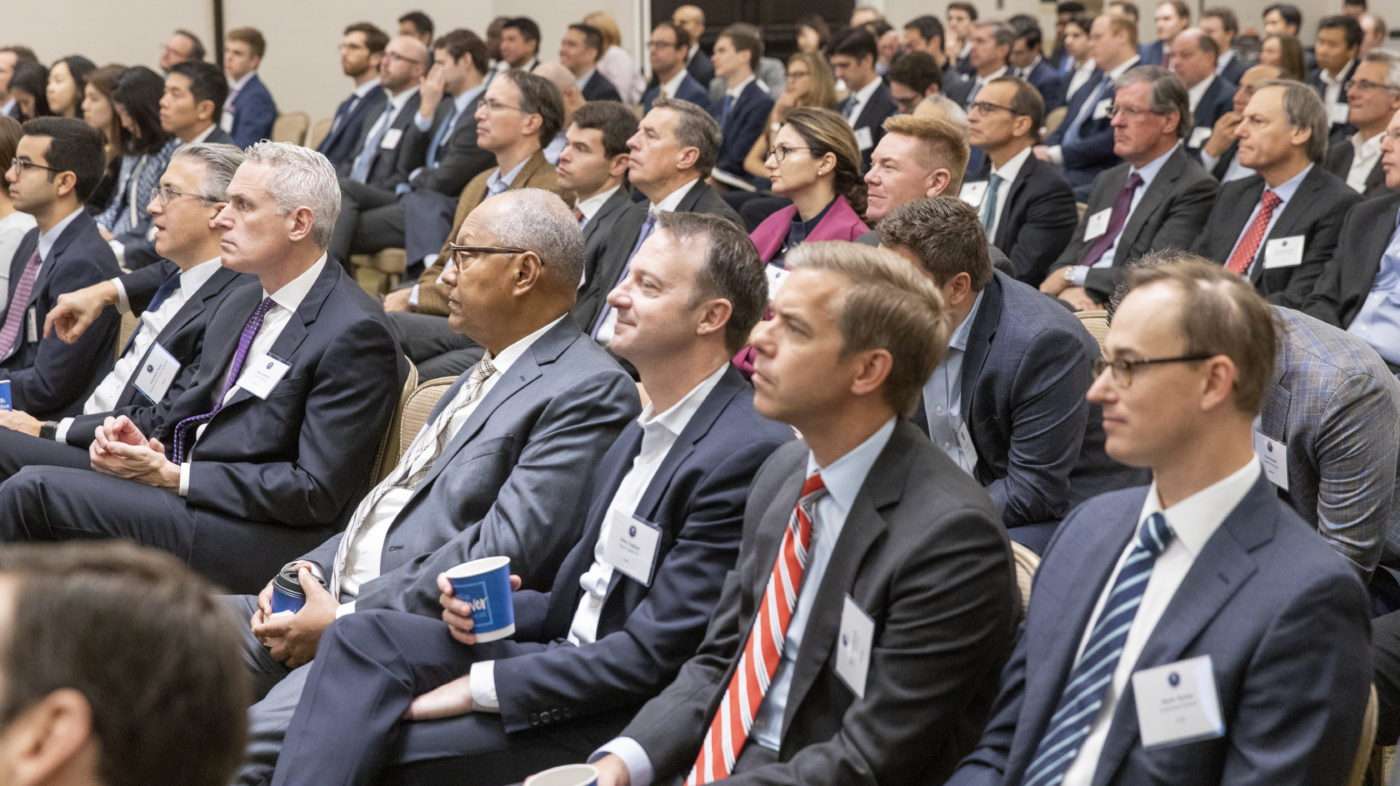
Kumar’s talk on robotics captivated the room.
Professor Kumar’s address was titled Robotics: What is Possible and What Should You Expect Going Forward? He began by listing a few claims made by entrepreneurs in Silicon Valley in recent years: self-driving cars, robotics, biotechnology, urban transit—and wondered how people believe these “often not well-justified” claims.
He discussed the roots of Artificial Intelligence (AI), which go back 50 years. In today’s world, it’s possible to collect very large data sets and extract results with powerful computers. “This is statistical machine learning,” he said. “Applied statistics, really.”
He stressed that one of the main adaptations today is the ability of computers to recognize speech and translate humans’ words into text, but this does not indicate that the machine understands language; it is merely a translation.
An area of intense interest in the last several years has been around self-driving cars. However, the first was introduced by Mercedes in 1987, in Germany. “And we are no closer than we were then [to having a fully automated, self-driving vehicle for daily use].
AI is powered by statistical machine learning and most successful applications involve human supervision and annotation. Humans are nowhere near getting 100 percent accuracy from the data produced by machines. “Getting to 90 percent is hard, and at some point, you just can’t get all the data you need,” he added.
Machine learning also carries an environmental cost. It’s quite expensive to run the machines, store data, and more, and requires the amount of fuel equal to that used by five internal combustion vehicles throughout their lifetime, just for one algorithm.
Kumar then discussed aerial robots (drones), which is his primary field. He showed several videos beginning with one in 2009 that demonstrated how robots (drones were relatively new and not well known then) were executing maneuvers that human pilots can’t do, navigating obstacles in small spaces, for example. In the video from 2012, the drones had increased in their precision and were able to adapt to changes in their environment and formed complex patterns of flight.
His project, The Falcon, flies at 20 meters per second and uses cameras found in smart phones—no GPS or human operator—to reach high-speed autonomy for use in search and rescue, for example. “This is state-of-the-art,” he said. “With no cell, Wifi, GPS or humans.”
He highlighted the machine’s ability to navigate through a wet, poorly lit and complex environment, such as the collapsed buildings that were part of the Fukushima Daiichi Reactor disaster in 2011, providing crucial information from an area into which humans cannot go. Abandoned factories, collapsed mines, and other critical areas that require exploration, mapping and data gathering, quickly—all are prime candidates for the use of aerial robots.
“The promise of AI is high,” Kumar said. “The market is worth $100 million or more and not necessarily in the consumer or military spaces, but in the B2B space, health, construction, real estate and manufacturing fields.”
“It’s easy to develop software when moves are discrete and deterministic, with unambiguous instructions and zero uncertainty,” he added. “That makes the programs learnable. But in self-driving cars, for example, you face complex problems. The real world is continuous, not discrete, with lots of different possibilities on the street.”
Finally, he cautioned the audience about reliance on AI. “You want safety first. Then verify that the product does what it says it does and trust that the product will not do other things. And finally, you need security that you are getting what you believe you are buying,” he said. “And remember, you need humans in the loop to operate these.”
“This technology has the power to augment our intelligence and disrupt every aspect of our lives. People in every industry will have their intelligence augmented in ways we can’t even imagine today.”
-
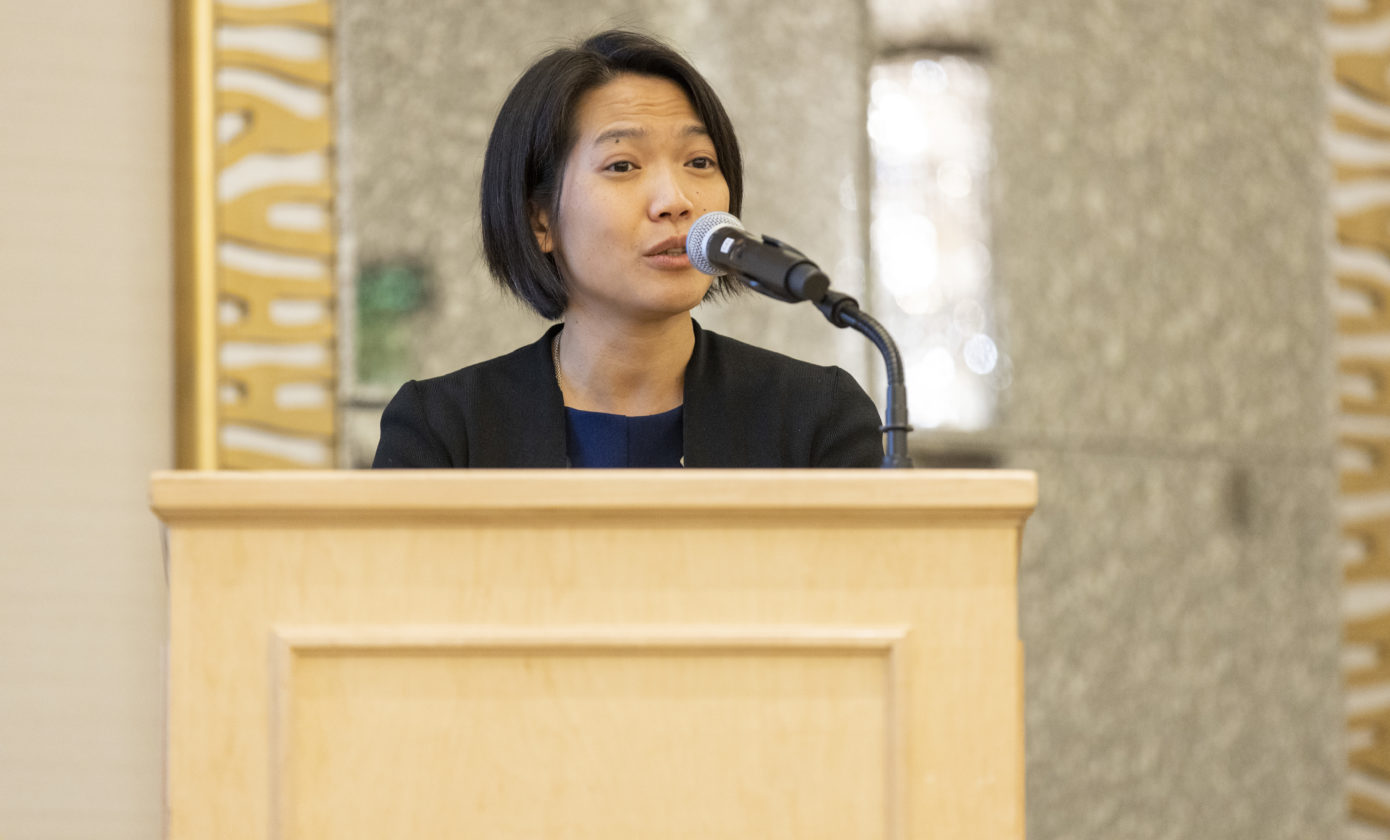
Maisy Wong, Assistant Director of the Grayken Program in International Real Estate and the Zell/Lurie Real Estate Center, gave this year’s State of the Center. -
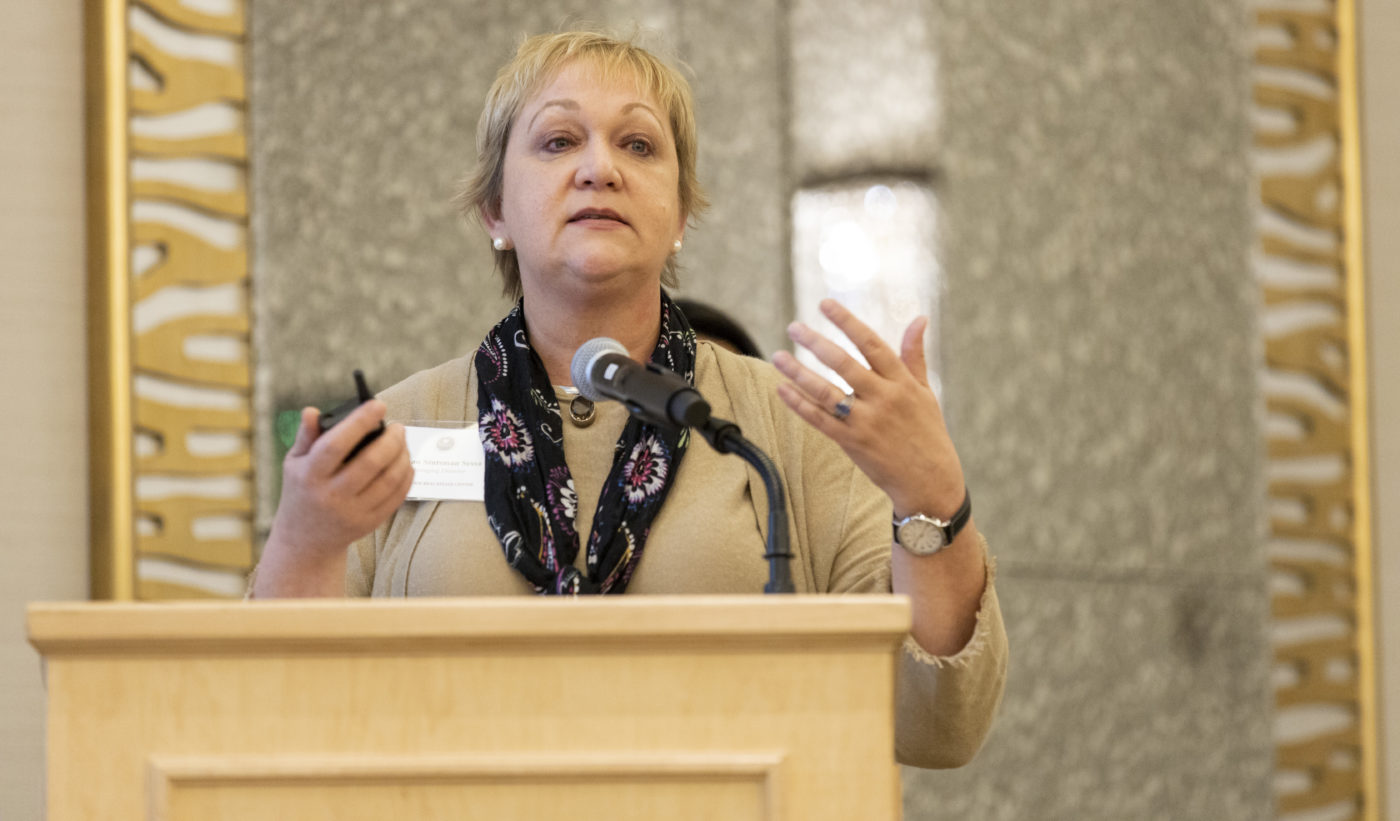
Susan Stutsman Sessa, Managing Director of the Zell/Lurie Real Estate Center, announced two new funds that are being established.
The State of the Center address followed, given by Maisy Wong, James T. Riady Associate Professor, Real Estate; and Assistant Director, Grayken Program in International Real Estate, Zell/Lurie Real Estate Center.
“Students are the future,” said Wong. “We consider how to connect students with members and research sponsors, while supporting cutting-edge research and facilitating partnerships between industry professionals and Wharton faculty and students.”
She announced two recent appointments: Asuka Nakahara, Associate Director, Zell/Lurie Real Estate Center, was appointed Practice Professor of Real Estate this fall, and Todd Sinai, Associate Professor of Real Estate and Business Economics and Public Policy at The Wharton School, became the Chair of the Real Estate Department on July 1. She also announced the introduction of three new courses in the Real Estate Department last year, each of which is seeing excellent enrollment.
Susan Stutsman Sessa, Managing Director, Zell/Lurie Real Estate Center, then announced two new funds that are being established as new ways to help students and members.
-
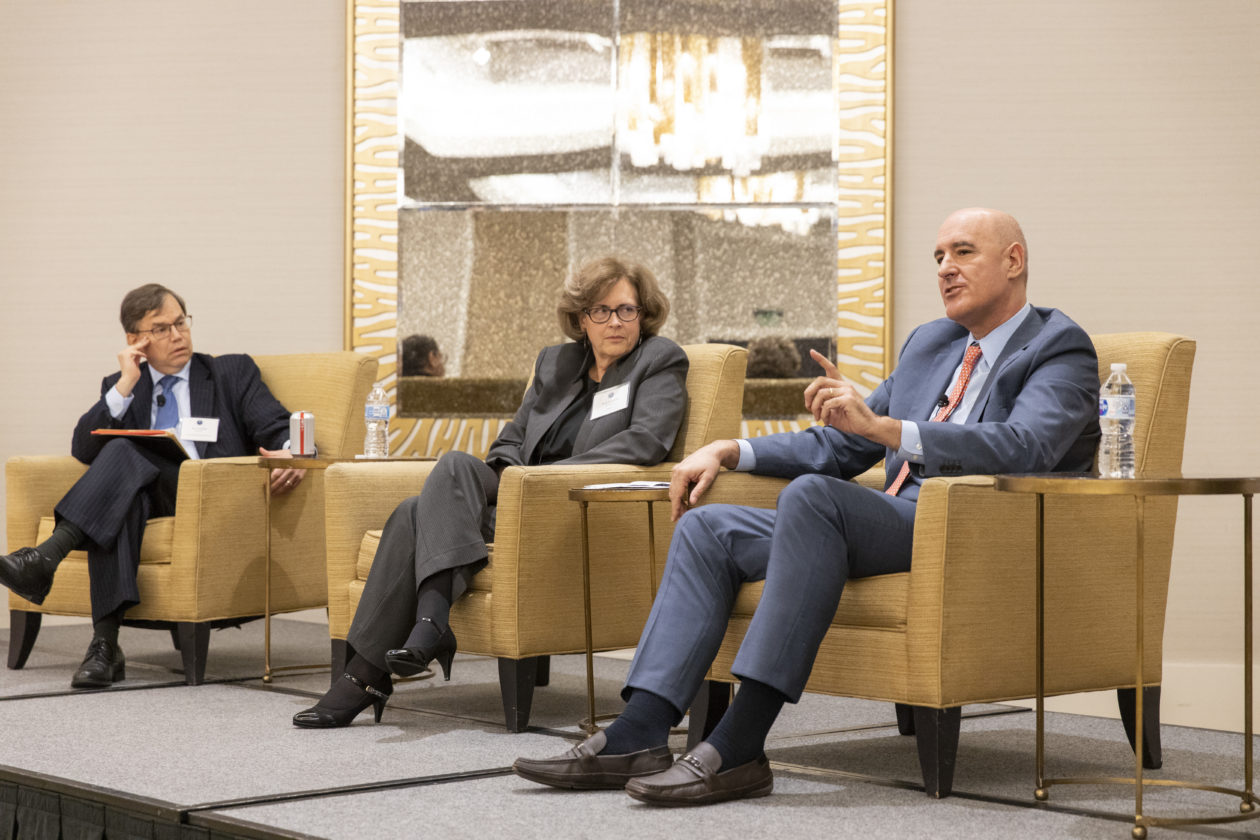
Moderator Joe Gyourko questions panelists Beth Simmons and Mauro Guillén. -
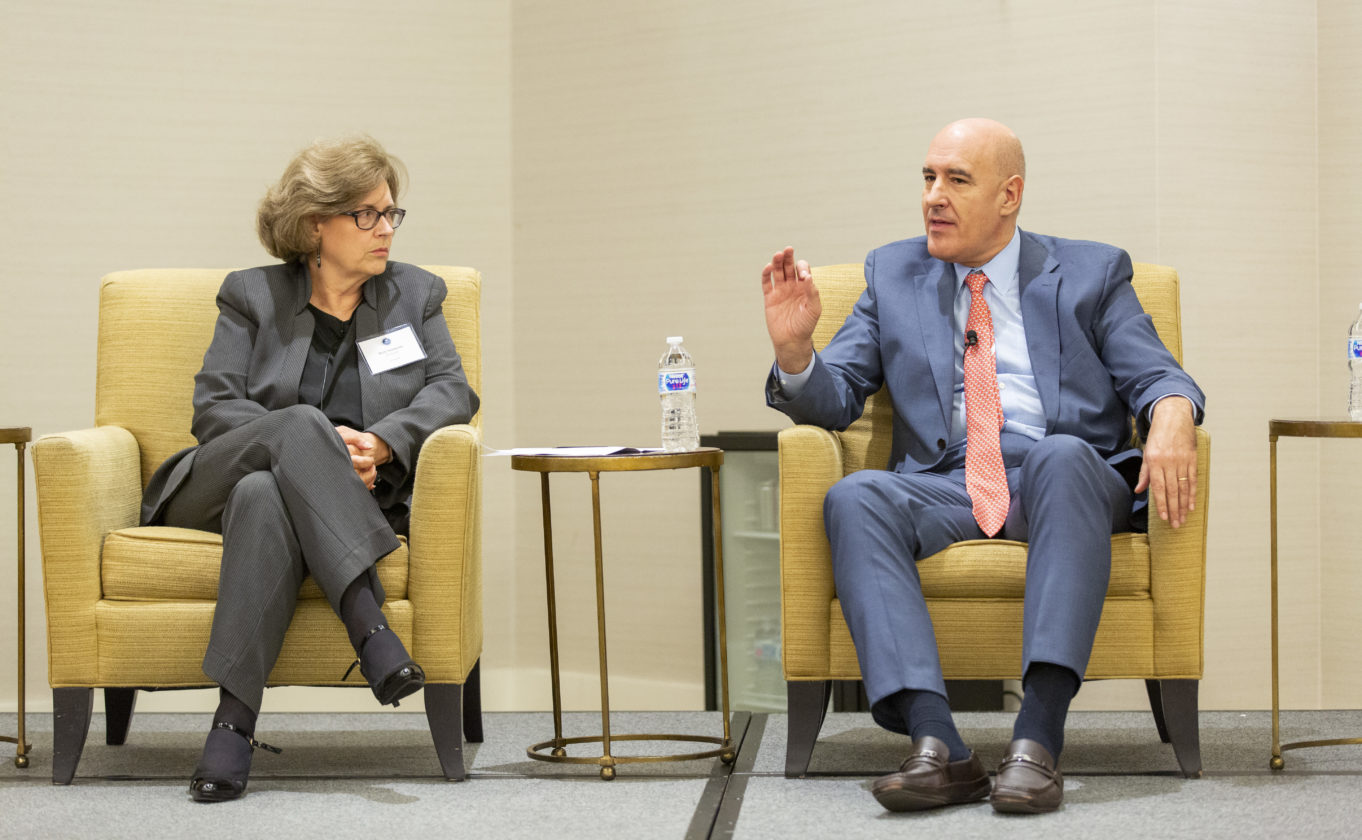
Mauro Guillén commented on the biases in the American labor market. -

The crowd listened attentively to the panelists.
The day’s first panel, The Decline of Globalization: What Is Driving It and What Does It Mean? was moderated by Joe Gyourko with panelists, Beth Simmons, Andrea Mitchell University Professor in Law, Political Science and Business Ethics, the University of Pennsylvania; and Mauro Guillén, Dr. Felix Zandman Professor of International Management, Professor of Management at the Wharton School. Both panelists are internationally recognized experts on the backlash to globalization and authors of several books on the topic.
Gyourko opened the discussion with a question about trade. “We see a lot of talk on trade when we talk about backlash. How important are the two forces where automation is being seen?” he asked.
Guillén and Simmons agreed that people often think of trade first when they hear of job losses. Although trade disparities do displace workers in many places, in the last 20 years, technology has been the most important factor—in the service sector as well as among professionals. “Between 50 to 80 percent of job losses can be linked to technology,” said Guillén.
Simmons added that while that answer is true, economically, “the world is shaped by ideology.” Around the world, assumptions are being made (and reinforced by nationalist leaders) that an “elite class” exists and is conspiring to take advantage of “common folk.”
“A populist leader will take advantage of that point of view, and is often stimulated by the process of othering people,” she said. “It’s hard to hear the message that automation is the real problem when that [othering] message becomes heard. People get angry about job losses—not when automated—but rather when impacted by strong import flows, which gives the opportunity to blame foreign countries and allows leaders to stimulate that kind of thinking.”
This phenomenon is not unique to the United States; it is occurring in Europe and even in China. The protectionist policies that are sometimes seen as solutions to job displacement is regressive and bad for long-term economic activity and innovation—and tends to hurt the poor most, Guillén said.
The group then discussed the skewing of income and wealth around the country. Gyourko wondered if there are policies that can be enacted to address that inequity.
Compensating people fairly and retraining them for new jobs are two ways to address it, according to Simmons. People often get attached to the place in which they live and don’t want to move to learn something new, however. Overall inequality needs to be addressed. “Unequal wealth that is a drag on a country results from discrimination in class, race, gender,” she said. “It’s necessary to determine where our inequality is coming from to determine how to address it.”
She explained that different opinions about how to rationally tackle inequality exist around the world. One way she suggests addressing this issue is through education to ensure tomorrow’s job force is ready for technological changes; skills mismatches is the big problem, not overall unemployment.
Home ownership and family and community relationships impact workers’ willingness to relocate too. Many countries offer better job training, such as Germany, for example, but there is no one best way to organize the labor market.
“The American labor market has a built-in bias,” Guillén said. “Some people do very well here and see great returns, yet it also punishes certain people. The unemployment rate, although at a historic low, doesn’t tell the whole story.”
“Where globalization is under attack, how do you see multi-lateral institutions developing?” asked Gyourko. “What about the WTO (World Trade Organization)? What’s the strategy? How do you see it functioning going forward, and what are issues and disputes that may not be settled there?”
Although the WTO (formed in 1995) has done much to improve global trade, it has been under attack, said Simmons. “Some of its problems are the natural result of institutions created under a certain power structure being stretched to accommodate other power structures.” The world needs to address its problems and enforce its rules as a way to ensure globalization gets back on track.
And the uncertainty around lateral consequences and collateral damage of the upheaval there can undermine everything, Guillén added. “Risk you can calculate and quantify. Uncertainty you can’t, and it’s become the new normal [thanks to] Washington and strongmen around the world. The formerly predictable democracies are no longer that way.”
Global growth has slowed in part as a reaction to such political uncertainty and has been exacerbated by political developments. “Policy swings that make things hard to predict, for example,” said Simmons. “Polarization has made it worse—and personalistic decision-making.”
Guillén added that getting people to re-engage (especially young people) in the democratic process, and vote, is one way to achieve stronger policies. “We need to decide what kind of society we want to be and what kind of economy we want to have, then we can create a path out of this,” he said.
The three continued to discuss uncertainty around the world, including in China. Other related issues include the hardening of various country’s borders, which has been on the rise in the last five or six years. Every country in the world currently has populist movements, on both the left and the right of the political spectrum, added Guillén, who called both extremes “bad.”
“The rise in globalization is related to social changes and sharp increase with female labor force participation,” said Gyourko. “Do you think the changing views on benefits versus costs of globalization are going to lead policy changes?”
Guillén, who is from Spain, admitted that he is biased around the issue of immigration, but believes that it is just too easy to blame foreigners for everything … it’s the populist point of view. “Fear and political backlash are coming from the change in proportions (of ethnicities),” he said. “But think about Tesla, Google, AirBnB … many companies that have transformed the economy have been founded by immigrants, who don’t actually compete for jobs with locals. Most come with either no skills or very high skills and most of the job losses have been in the middle, and have been due to technology,” he said.
Populist politicians feed the fear, he added, and then explained how undocumented immigrants are actually helping the U.S. Social Security system because they pay payroll taxes but cannot claim benefits, citing a report from the Social Security Trust.
-
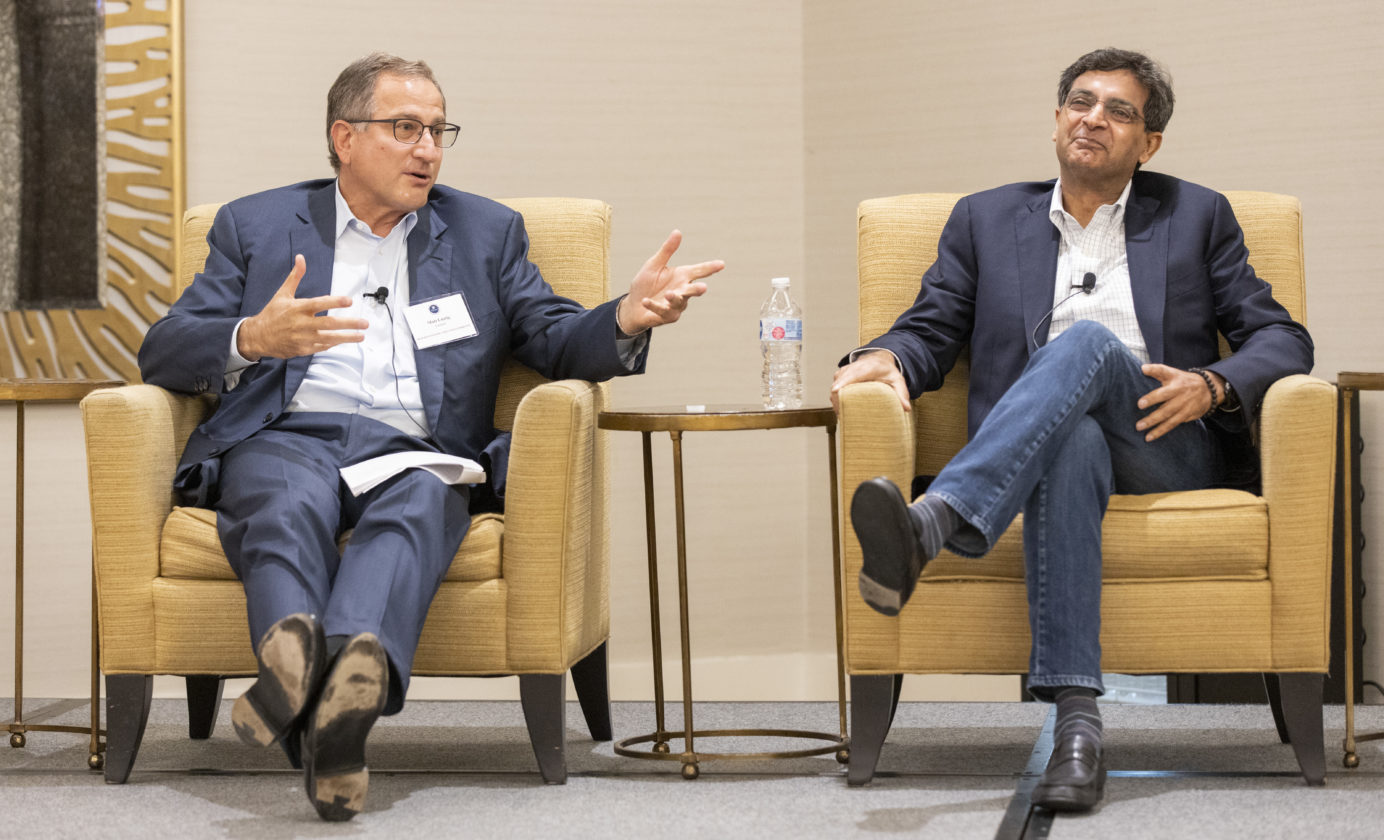
Facilitator Matthew Lustig questioned Mathrani about digitally native brands and how they are faring. -
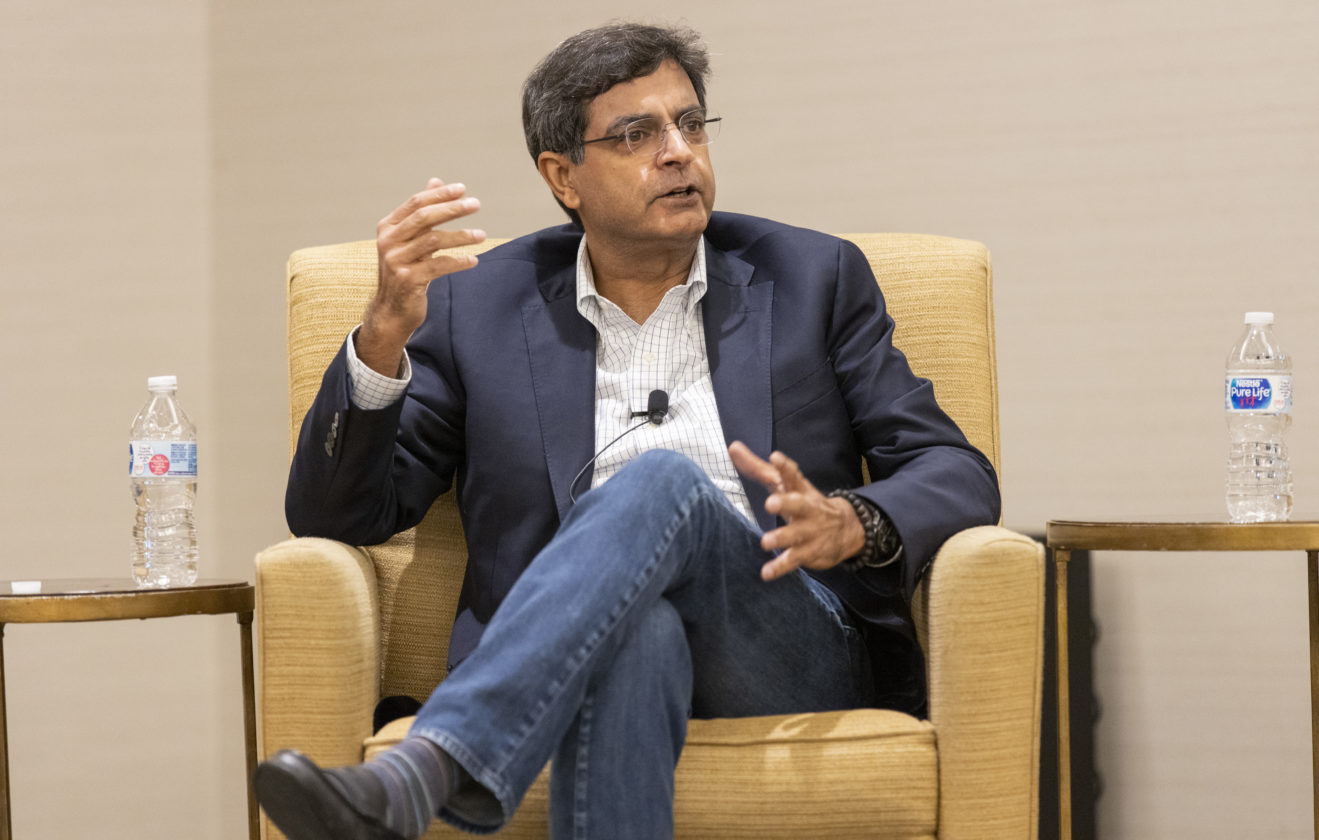
Sandeep Mathrani, Chief Executive Officer, Brookfield Properties Retail Group, and Vice Chairman, Brookfield Properties, examined disruptions in retail properties.
The day continued with a conversation between moderator, Matthew J. Lustig, Chairman of Investment Banking, North America; Head of Real Estate & Lodging, Lazard; and Chair, Advisory Board, Zell/Lurie Real Estate Center at the Wharton School, and Sandeep Mathrani, Chief Executive Officer, Brookfield Properties Retail Group; Vice Chairman, Brookfield Properties (one of the biggest owners of retail malls in the world) on The Future of Retail and What It May Mean for Real Estate.
Lustig introduced Sandeep Mathrani by saying he has a “unique view” about the business. “It’s clear that our lives are being disrupted every day,” he said. “In real estate, it’s happened in every property type. The first was retail. How are you thinking about retail?”
“It’s important to appreciate the business broadly,” Mathrani replied. “Obsolescence exists in every industry, and real estate is no different. Any time you overbuild, you have downfall—vacancies, office, hotel, etc.—it’s not unique to retail. But when a mall goes under, it’s news because it’s all about scale. There are about eight billion square feet of retail in America, and it should be about half that.”
He continued to say that 2019 has been “interesting” with bankruptcies and store closures. “We thought 2018 was bad, but this has been worse, and yet, we also have leased the most square footage in the last nine years—11 million square feet. Retailers have consolidated and there is demand.” He added that his portfolio is 96 percent occupied.
Malls are very different places today than they were in 2006, however. Now there are fewer clothing stores and more electronics, food, fitness and other stores—curated to today’s generation. Today they are often work-live-play environments.
Lustig wondered about digitally native brands and how they are faring. Mathrani said that even though they “don’t believe in bricks and mortar, once they reach a certain level online, they must open physical stores to go further.” He cited three reasons for this statistic: 1) customer acquisition costs are low in physical stores; 2) when you exist only online, it’s hard to upsell the customer; and 3) the last mile of distribution carries very high costs.
“If retail can put stores closer to the population, and perfect that last mile, it’s a win-win.”
“If you close a store, you lose about 50 percent of sales,” he said. “You can’t maintain only via eCommerce. We all know now that you need both forms of distribution to be successful.”
Lustig asked about department stores. “They used to be an incubator for new brands. Without them, is that a big loss to the industry?”
Some department stores are still doing it well—keeping the newness at their shopping centers—Mathrani replied, offering Nordstrom’s as an example. Today, malls are being curated as something like large department stores, including up to about 15 percent as incubation space.
The men then discussed technological advances and advantages in the retail space. “In my mind, digital is the differentiator, the baseline, but old is new again. We thought we could go all digital, but people like people.”
He doesn’t think that the future looks like Amazon Go stores, for example, where customers walk in and walk out; items are scanned as they are picked off the shelves and automatically charged to the customer’s Amazon account. At the other extreme, Nordstrom’s is staffing up to enhance its services, which supports his people-centric beliefs.
Lustig and Mathrani talked briefly about the latter’s move to the private space after running one of the largest public companies as a REIT. He said that it’s an advantage to be a private entity, with groups in office, residential, hospital and retail. “It saves energy, the speed to market is faster, I can transform assets faster, and it’s a lot more fun.”
The last panel of the day was titled Structural Changes Facing the Real Estate Industry. Moderator Ron Kravit, Consultant, Tracker Capital Management, LLC; Vice Chair, Advisory Board, Zell/Lurie Real Estate Center at the Wharton School, led the discussion between panelists Jared Katseff, Engagement Manager, McKinsey & Company; Diane Hoskins, Co-CEO, Gensler; and Elie Finegold, Venture Advisor, MetaProp.
“Today’s theme has been disruption and how it affects real estate,” said Kravit. “We’re looking to the future and want to discuss sustainability and how it affects investing in the long-term.”
Katseff, whose clients invest in long-term developments, advised the audience to know its target population and understand the economic changes its members have experienced. He mentioned that growth has been bifurcated since the last recession, with urban doing better than rural. He also predicted that, in the coming years, jobs will be focused in megacities and high-growth areas within the urban core.
“Growth is still happening in the mega cities, but the mix of jobs could shift in different ways,” he said. “Jobs may be lost in office space in New York City, for example, through attrition, and will be replaced ty STEM professionals, healthcare professionals and others who aren’t easily replicated by robotics.”
He predicted that automation will increase in the near future and will affect all industries, including travel and real estate.
Hoskins, who is co-CEO of the largest architecture and design firm in the world which designs one billion square feet of product each year in nearly every sector, discussed how the changes taking place in work spaces are built around the credo that “collaboration is critical for innovation.” Her clients want fewer square feet per person but more for groups to gather; higher ceilings, interconnected office floors and a wide variety of amenities. But one size does not fit all, she added. The more sophisticated work environments offer choices, and items that are necessary to do the job are sustainable, and not fads.
“Shifts are happening in all markets that are creating and reducing value as today’s trends continue to move through them,” she said. “Everyone wants to know how to optimize space and how to connect people.”
Finegold, who advises a number of start-ups, correlated real estate values to transportation and talked about sustainability in all areas of the economy. “When transportation changes, real estate changes … moving people and moving goods in the most efficient way [is the basis for the sharing economy] and should be seen as sustainable.”
Kravit questioned the panel about the vertical aspects of tech chains. “Google drones use flight to deliver and Amazon is coming too. Where does this lead over time?” he asked. “Does it affect real estate?”
Currently, retrofitting or repurposing buildings, such as parking garages, and lots in airports and convention centers, that often sit partially empty, is seen as a way to use them for rideshare hubs or the final leg of package delivery. The panelists agreed that advances in technology and increased mobility present enormous possibilities for future thinking about the use of space.
“Current building codes require much more space for cars than for people,” said Katseff. “But it’s hard to take away parking spaces or decline to build parking for new buildings.”
Changes in density and in use of space dictate other changes as far as suburban development and urban growth. Mixed-use properties continue to present opportunities as well as challenges.
“Cities are where people want to be, so that’s where businesses want to be too,” said Hoskins. “There is a premium around walkability, and talent is in the cities.”
Finegold agreed that “assets that are most walkable have increased in value 2 to 3 times” of those that are not. He added that he predicts “multi-modal cities” in which the urban hubs have “multiple centers of gravity.”
As far as the city/suburb debate, Katseff suggested that “there are walkable parts of suburbs and urban parts of suburbs. Those that will succeed will include a mix of uses, modes of transportation and services. Municipal boundaries will be less important.”
The next Zell/Lurie Real Estate Center Members’ Meeting will take place on April 29-30, 2020.
Posted November 2019

